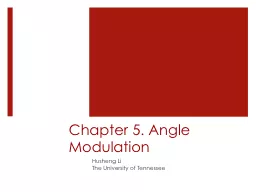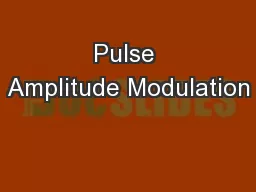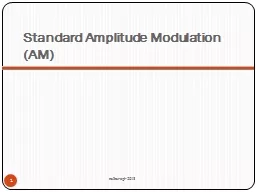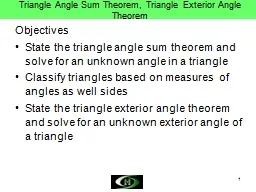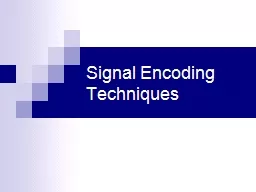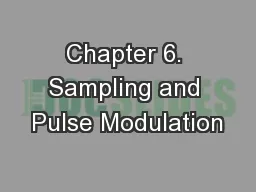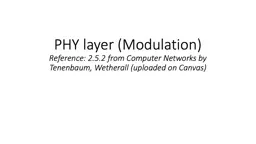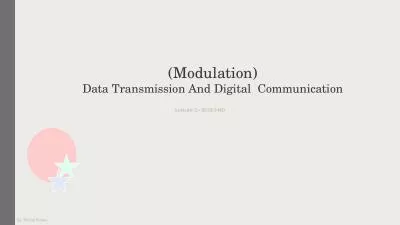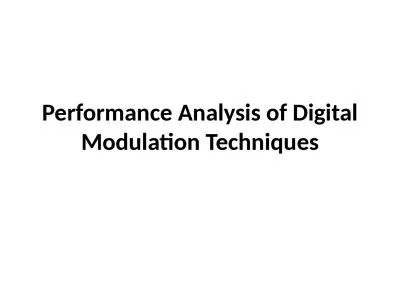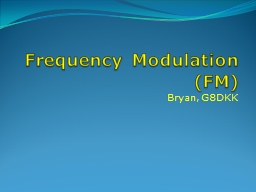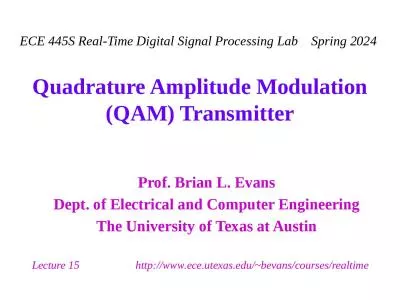PPT-Chapter 5. Angle Modulation
Author : alexa-scheidler | Published Date : 2017-05-19
Husheng Li The University of Tennessee Phase and Frequency Modulation Consider the standard CW signal We define the total instantaneous angle Phase and Frequency
Presentation Embed Code
Download Presentation
Download Presentation The PPT/PDF document "Chapter 5. Angle Modulation" is the property of its rightful owner. Permission is granted to download and print the materials on this website for personal, non-commercial use only, and to display it on your personal computer provided you do not modify the materials and that you retain all copyright notices contained in the materials. By downloading content from our website, you accept the terms of this agreement.
Chapter 5. Angle Modulation: Transcript
Husheng Li The University of Tennessee Phase and Frequency Modulation Consider the standard CW signal We define the total instantaneous angle Phase and Frequency Modulation Phase modulation PM. The reason for that may be that the channel is bandlimited or that we are assigned a certain frequency band and frequencies outside that band is supposed to be used by others Therefore we are interested in the spectral properties of v arious modulat Measur i ng Instruments Tacheometers And Theodolites Angle s & Directions An angle is defined as the difference in direction between two convergent lines . A horizontal angle is formed by the direc Section 6.6. DSB/SC-AM . Modulation (Review). Frequency Shift . Property (Review). Frequency Spectrum of DSB/SC-AM . Signal (Review). Carrier Signal for Amplitude Modulation. Pulse Amplitude Modulation. nalhareqi-2013. 1. Standard Amplitude Modulation (AM). nalhareqi-2013. 2. In the DSP-SC demodulation, a receiver must generate a local carrier in frequency and phase synchronism with the carrier used for modulation.. Objectives. State the triangle angle sum theorem and solve for an unknown angle in a triangle. Classify triangles based on measures of angles as well sides. State the triangle exterior angle theorem and solve for an unknown exterior angle of a triangle. Lecture Learning Outcomes. Be able to understand, appreciate and differentiate the different signal encoding criteria available.. Class Contents. Signal Encoding Criteria. Digital Data, Analogue Signals. Husheng Li. The University of Tennessee. Chopper Sampling . We introduce a switching function such that . x_s. (t)=x(t)s(t), where. Nyquist. Criterion. The sampling rate should be at least twice the bandwidth of the signal, in order to fully reconstruct the signal.. Analog data to analog signal. (AM, FM, PM). Digital data to analog signal. (ASK, FSK, BPSK, QAM). Analog data to digital signal. (PCM, DM). Digital data to digital signal. (line codes). Signal Encoding Techniques (modulation and encoding). Tenenbaum, . Wetherall. (uploaded on Canvas). Communication. Exchange of information from point A to point B. 100001101010001011101. 100001101010001011101. Transmit. Receive. Wireless Communication. Lecture 2– 2019/1440. By: Elham Sunbu. OUTLINE. Modulation. Analog Modulation.. AM. FM. PM. Digital Modulation.. Modulation. Operation of varying amplitude, frequency or phase of carrier signal accordingly with the instantaneous amplitude of the message signal.. Binary modulation schemes . ASK. , FSK, . PSK. n. = . 1, . M = 2 (Only Two . output conditions are . possible). Baud . is equal to . the bit . rate. M-. ary. Modulation Techniques. QPSK, 8-PSK, 18-PSK, QAM, 16-QAM. Example: ASK, FSK, PSK, QAM. Binary digital modulation. Multilevel digital modulation. Amplitude Shift Keying. Binary-ASK --- BASK. Or On-Off Keying OOK. Uses two amplitude levels for the modulated carrier . Bryan, G8DKK. Outline. AM and FM Waveforms. FM Transmission. Modulation Frequency. Deviation. Mic Gain . Control. Limiter/Limiting amplifier. Occupied Bandwidth. FM Receivers. Receiver bandwidth (Filters). Prof. Brian L. Evans. Dept. of Electrical and Computer Engineering. The University of Texas at Austin. 15 - . 2. Introduction. Digital Pulse Amplitude Modulation (PAM). Modulates digital information (symbols) onto amplitude of pulse.
Download Document
Here is the link to download the presentation.
"Chapter 5. Angle Modulation"The content belongs to its owner. You may download and print it for personal use, without modification, and keep all copyright notices. By downloading, you agree to these terms.
Related Documents

